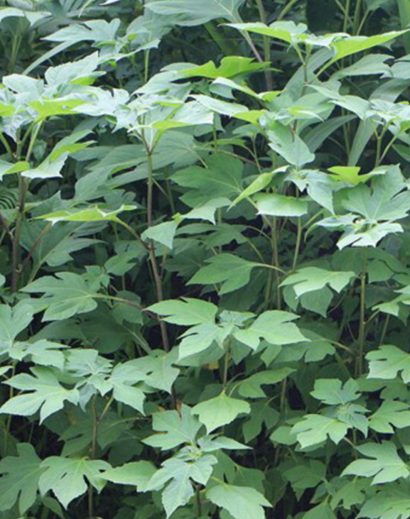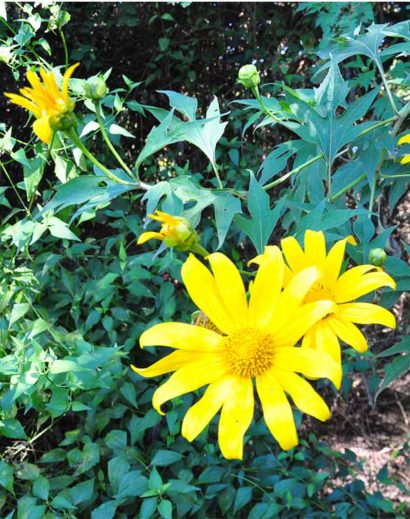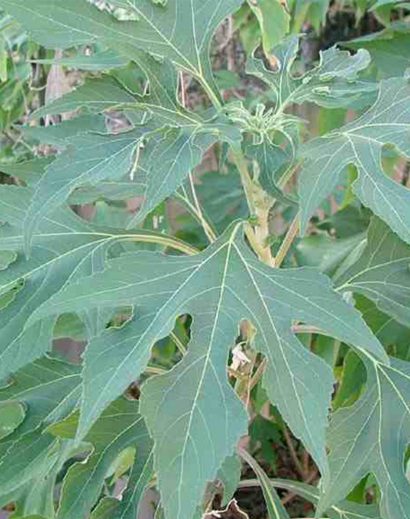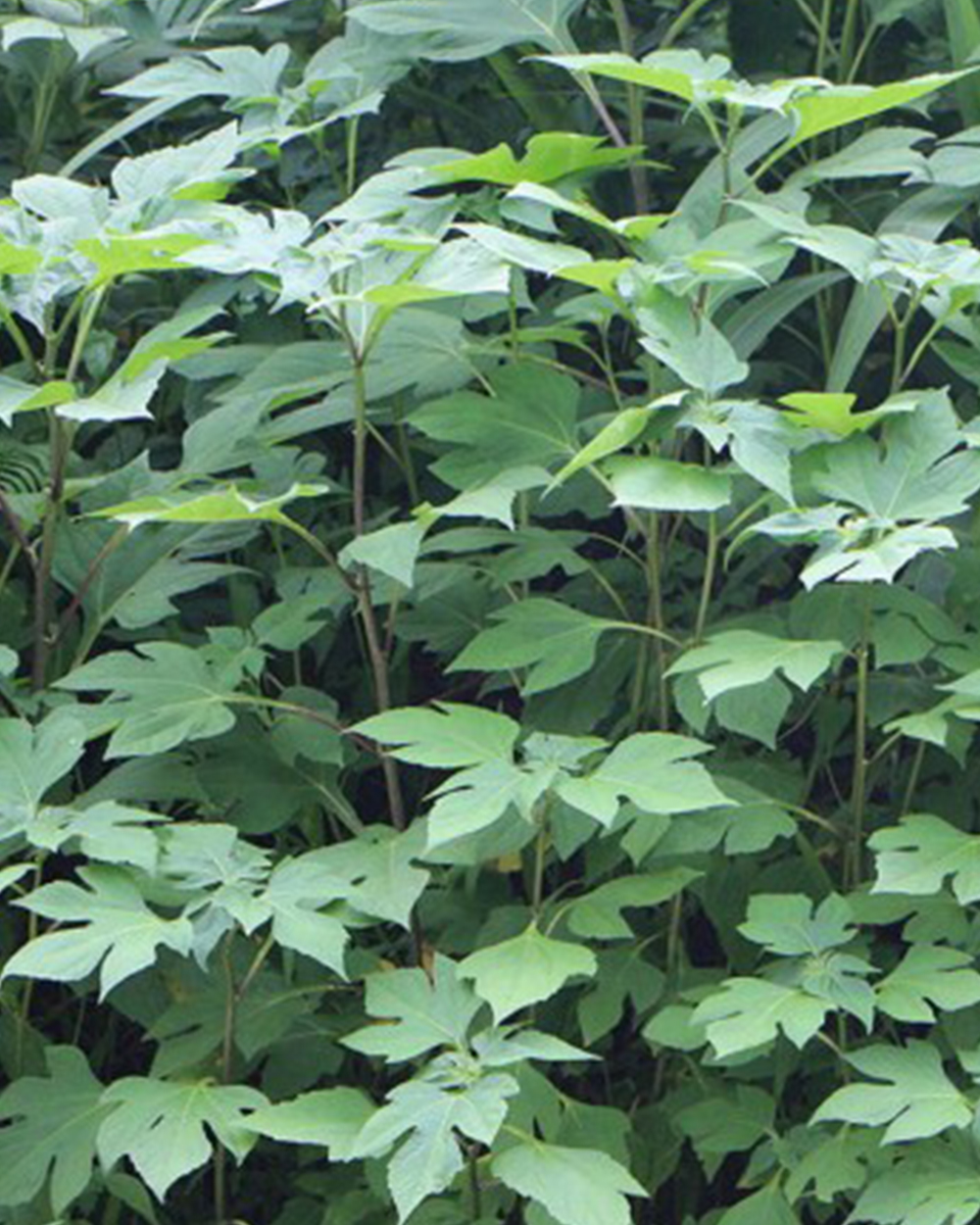Tithonia is a genus of flowering plants in the sunflower family (Asteraceae). It includes several species of herbaceous plants and shrubs that are native to Mexico and Central America. One of the most well-known species in this genus is Tithonia diversifolia, commonly called the Mexican sunflower or tree marigold.
Here are some key characteristics and information about Tithonia:
- Appearance: Tithonia plants are known for their bright orange to red-orange, daisy-like flowers, which resemble those of true marigolds. The flowers are typically large and showy, making them popular in garden settings. The leaves are usually rough and serrated.
- Growth Habit: Tithonia diversifolia is a tall and fast-growing plant that can reach heights of 6 to 12 feet (1.8 to 3.7 meters) or even more. It has a bushy, shrub-like growth habit with multiple stems.
- Cultivation: Tithonia plants are often cultivated as ornamental flowers in gardens and as pollinator attractors due to their bright colors. They are also grown in some regions as green manure or cover crops, as they can improve soil fertility.
- Ecological Importance: Tithonia species, particularly Tithonia diversifolia, are valuable for their ability to attract pollinators such as butterflies and bees. They can also serve as a food source for certain wildlife species.





Reviews
There are no reviews yet.